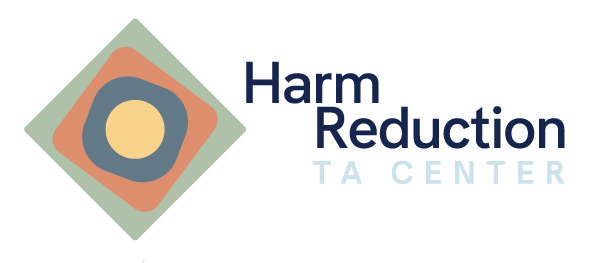Internal Community
Your internal community is the heart, soul, and backbone of your organization and includes staff, volunteers, program participants, board members, donors, and, often, community partners. Building internal community means building relationships based on your shared values as a part of a harm reduction organization, values such as:
- Compassion
- Non-judgment of people and their behavior
- Reducing shame and stigma, especially related to drug use and other marginalized activities
- Science and peer-reviewed evidence
- Recognition that the impact of trauma and cultural barriers (such as racism, sexism, and classism) impact people’s relationships with drugs
- Cultural humility and competency
- Equity
- Service
- Recognition of personal autonomy
- Meaningful empowerment
- Transparency
- Shared responsibility
Practicing these values with everyone you meet – from participants to donors – will build trust and the kind of community you will need in order to build the services you want for your participants.
Building Internal Community
Other suggestions for building community include:
- Define mission and values – people commit to ideals and values they feel good about, so an important first step in building a strong internal community is defining the core mission and values of the organization.
- Share power – making sure that various stakeholders have a real say in the agency helps people feel connected and committed to the work and mission.
- Cultivate strong leadership – identifying and cultivating people that can take leadership positions and embody your mission and values is the key to building and sustaining your organization’s community.
- Recognize contributions – take the time to publicly recognize and acknowledge the contributions of all stakeholders.
- Practice equity – make sure that all policies and procedures are followed impartially, fairly, and universally. If there need to be exceptions, make sure those exceptions are transparent.
- Give feedback – be willing to provide stakeholders with honest feedback about the needs of the organization that are not being met.
- Assume positive intent – assuming other people mean well lightens moods, lowers stress levels, and quite often throws other people off guard in positive ways.
- Be accountable – be willing to openly recognize the organization’s inevitable shortcomings.
- Be transparent – being as honest and transparent as possible with regard to the organization and its workings helps build trust.
- Be reliable – being an organization that people can count on is essential in harm reduction.
- Have follow-through – follow through on all your commitments to your community, even if it is just to explain why you can’t do what you wanted or hoped.
- Be equivocal – if you’re not sure the organization can achieve something say “maybe”.
- Share food – finding ways to share food builds a sense of trust and community.
- Be a team – act and think in terms of being a team – that is a collective unit in pursuit of a common goal, with a common identity and a need to support one another in order to achieve that goal.


